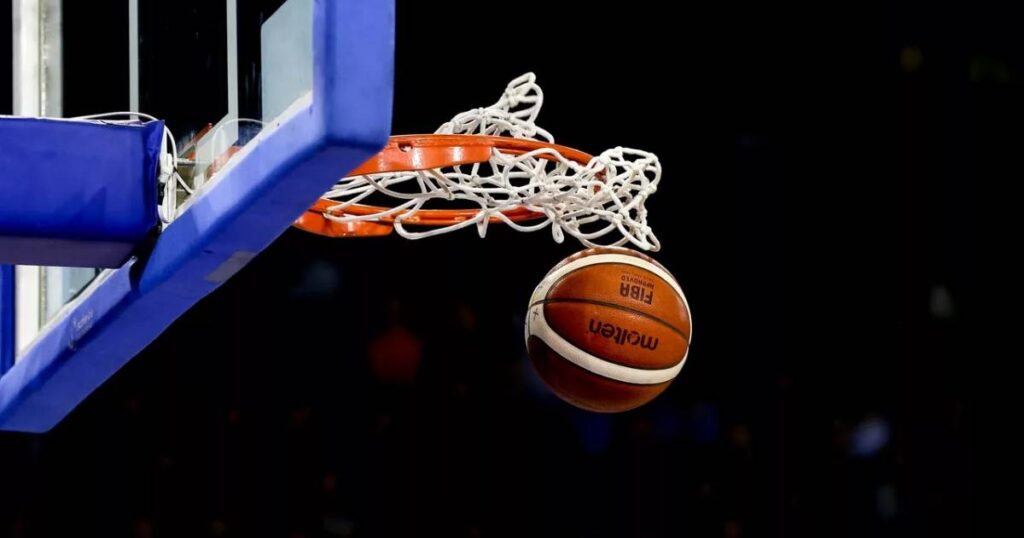Embark on a creative journey as we delve into the intricacies of drawing a basketball goal. Whether you’re an aspiring artist or just looking for a fun activity, this guide will help you capture the essence of this iconic sporting element.
Unleash your artistic prowess with step-by-step instructions on how to draw a basketball goal. From the graceful arc of the hoop to the sturdy backboard, this guide will transform a blank canvas into a dynamic representation of the game.
Discover the joy of translating sports into art with our guide on drawing a basketball goal. Perfect for enthusiasts of all skill levels, this tutorial provides clear and concise steps, ensuring a rewarding artistic experience.
Understanding the Basics
Mastering the basics is crucial when learning how to draw a basketball goal. Begin with a simple outline for the hoop’s circular shape. Next, sketch a straight line below for the backboard, ensuring proportional placement. These foundational elements form the structure for your drawing.
Draw the rim as an oval attached to the hoop, and create a mesh-like pattern for the net. Keep lines light and adjustable as you refine your drawing. Understanding these fundamental steps sets the stage for creating a realistic and visually appealing representation of a basketball goal.
Sketching the Hoop Structure
Extend two lines downwards from the oval’s bottom to form the main support, keeping in mind the practicality and durability of the basketball goal. Connect the ends to create the hoop, ensuring a proportionate and symmetrical design that not only complements the overall aesthetics but also addresses questions like How Much Is A Basketball Goal?
Next, draw the backboard with two vertical lines on either side of the hoop support. Connect the lines at the top, forming a rectangular shape. Add thickness to the backboard for a realistic look. Keep your lines light and adjustable as you refine the details, allowing for easy corrections and adjustments in your basketball goal sketch.
Crafting the Backboard

Crafting the backboard is a crucial step in drawing a basketball goal. Begin by sketching a rectangular shape, ensuring it’s proportionate to the hoop. Add details like the support brackets on each side. Remember to keep lines clean and straight for a polished look.
Use light strokes to indicate the reflective surfaces and darker tones for shadows. Enhance the realism by adding subtle details like screws or logos. With careful attention to these steps, your drawn basketball backboard will come to life with authenticity and style.
Adding Depth and Dimension
To add depth and dimension to your basketball goal drawing, start by shading the areas where shadows naturally fall. Pay attention to the angles of light and dark, emphasizing the curvature of the hoop and backboard. Use light strokes to gradually build up the shading, creating a sense of volume.
Consider adding subtle details such as the thickness of the metal rim and the texture of the net. These small touches can enhance the realism of your drawing. Remember, practice makes perfect, so don’t be afraid to experiment with different shading techniques to achieve the desired three-dimensional effect in your artwork.
Detailing the Net
Crafting the net is a crucial step in drawing a basketball goal. Begin by drawing a series of interconnected loops beneath the hoop, creating the mesh-like appearance of the net. Keep the lines loose and slightly irregular for a realistic touch.
Add small curved lines within the loops to indicate the net’s texture. Ensure the lines are not perfectly straight, as this helps convey the natural movement of the net. Pay attention to spacing and overlap, making adjustments as needed. This simple yet effective technique brings life to your drawing, capturing the dynamic essence of a basketball goal.
Incorporating Realistic Elements

Incorporating realistic elements into your basketball goal drawing can make it come to life. Start by paying attention to proportions to ensure the hoop and backboard are in harmony. Add details like the rim’s thickness and the net’s texture to capture the essence of the game.
Consider shading and shadows to create depth, making the drawing more three-dimensional. Observe a real basketball goal to notice small nuances, like reflections and imperfections, and try to replicate them. By focusing on these details, your drawing will convey a sense of realism and authenticity that resonates with viewers.
Enhancing Shadows and Highlights
Begin by identifying the light source, it’s above the hoop. Darken areas away from the light to create shadows, emphasizing the hoop’s three-dimensional form. Then, add highlights to the parts directly hit by light, like the rim and net attachment points, to enhance realism and depth.
For a polished finish, blend shadows and highlights subtly. Use a light touch, gradually building up intensity. This technique adds dimension, making your basketball goal pop on paper. Experiment with shading to find the right balance, and soon, your drawing will capture the essence of a well-lit, dynamic basketball scene.
Tips for a Polished Finish
| Tip Number | Tip Description |
| 1 | Use smooth, controlled strokes for clean lines. |
| 2 | Pay attention to proportions to maintain realism. |
| 3 | Add shading for depth; focus on the light source direction. |
| 4 | Erase any unnecessary lines or smudges for a neat look. |
| 5 | Consider using colored pencils for vibrant finishing touches. |
Achieving a polished finish in your basketball goal drawing is easy with a few simple tips. First, focus on clean lines and defined edges. Take your time outlining the hoop, backboard, and net to create a sharp and professional look. Use short, controlled strokes for smoother lines.
Next, pay attention to shading and highlights. Add shading to the appropriate areas to create depth, and use a lighter touch to highlight the edges for a realistic finish. Remember, practice makes perfect, so don’t hesitate to experiment with different techniques until you find the style that suits your drawing.
Exploring Creative Variations

Get imaginative! Experiment with diverse styles for your basketball goal drawing. Try different perspectives, colors, or even surreal elements. Unleash your creativity and make the hoop uniquely yours.
Consider bold outlines, vibrant hues, or playful patterns. Add a personal touch by integrating elements that resonate with your style. Whether it’s a cosmic hoop or a graffiti-styled backboard, have fun exploring various creative avenues to make your basketball goal drawing stand out.
FAQs
What materials do I need to draw a basketball goal?
All you need is paper, a pencil, an eraser, and some coloring tools if you want to add a splash of color.
Can beginners follow this guide?
The step-by-step instructions are designed for artists of all skill levels, making it easy for beginners to create a great drawing.
How long will it take to complete the drawing?
The time it takes varies, but on average, you can finish the drawing in about 20-30 minutes. Take your time and enjoy the process!
Can I add my own creative elements to the drawing?
The guide provides a basic framework, but feel free to get creative and add your unique flair to make the basketball goal truly your own.
Do I need to be a basketball fan to draw a basketball goal?
Not at all While basketball enthusiasts may find it especially enjoyable, anyone can have fun and create a captivating drawing, regardless of their familiarity with the sport.
Conclusion
Mastering the art of drawing a basketball goal is an accessible and enjoyable endeavor for artists of all levels. With a simple set of materials and easy-to-follow steps, this guide empowers both beginners and seasoned artists to capture the essence of this iconic sporting element.
So, pick up your pencil, embrace the joy of artistic creation, and let the world of basketball come to life on your canvas. Whether you’re a sports enthusiast or just seeking a fun and rewarding artistic project, drawing a basketball goal offers a satisfying and approachable creative experience.



